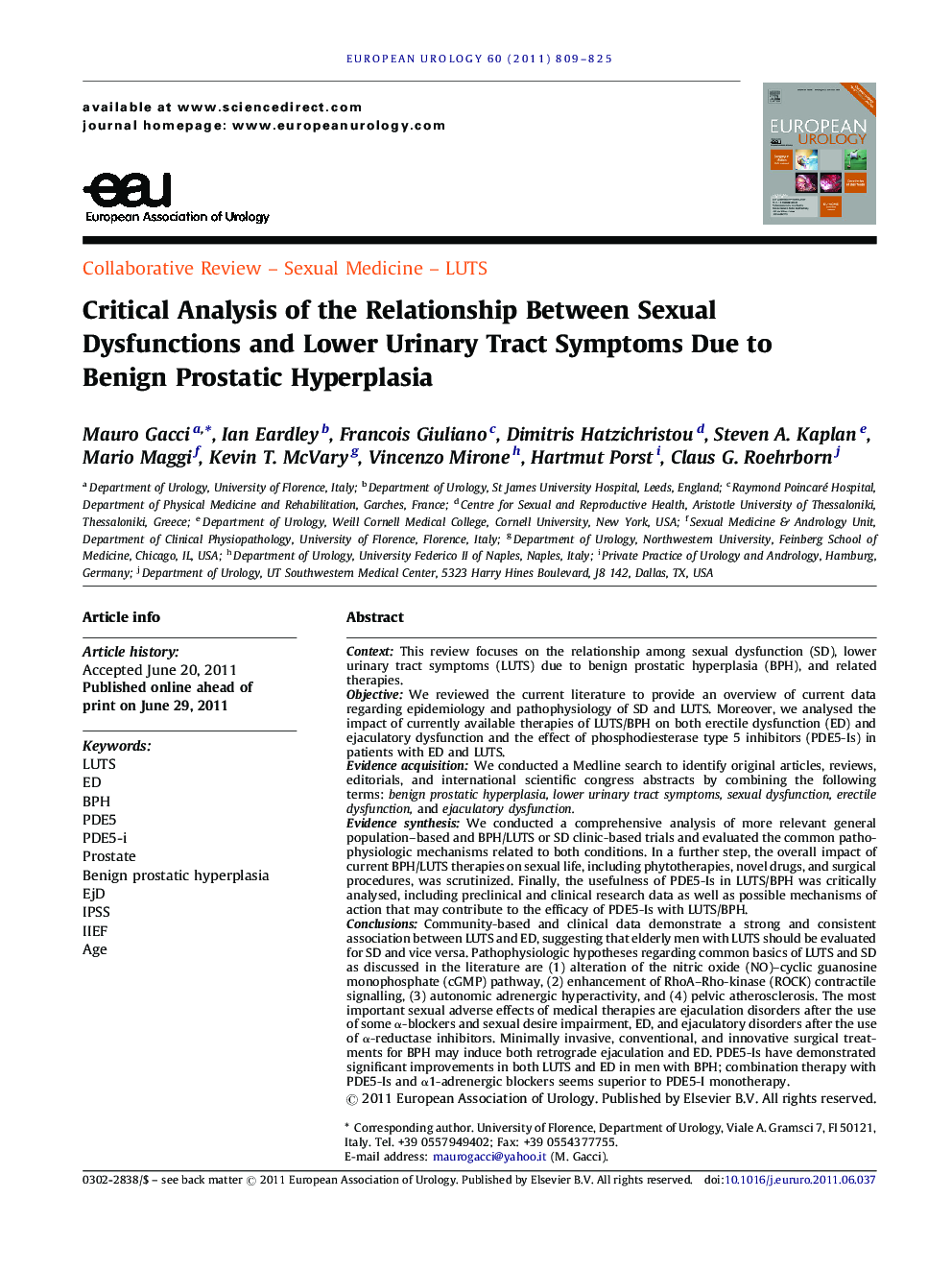| Article ID | Journal | Published Year | Pages | File Type |
|---|---|---|---|---|
| 3924274 | European Urology | 2011 | 17 Pages |
ContextThis review focuses on the relationship among sexual dysfunction (SD), lower urinary tract symptoms (LUTS) due to benign prostatic hyperplasia (BPH), and related therapies.ObjectiveWe reviewed the current literature to provide an overview of current data regarding epidemiology and pathophysiology of SD and LUTS. Moreover, we analysed the impact of currently available therapies of LUTS/BPH on both erectile dysfunction (ED) and ejaculatory dysfunction and the effect of phosphodiesterase type 5 inhibitors (PDE5-Is) in patients with ED and LUTS.Evidence acquisitionWe conducted a Medline search to identify original articles, reviews, editorials, and international scientific congress abstracts by combining the following terms: benign prostatic hyperplasia, lower urinary tract symptoms, sexual dysfunction, erectile dysfunction, and ejaculatory dysfunction.Evidence synthesisWe conducted a comprehensive analysis of more relevant general population–based and BPH/LUTS or SD clinic-based trials and evaluated the common pathophysiologic mechanisms related to both conditions. In a further step, the overall impact of current BPH/LUTS therapies on sexual life, including phytotherapies, novel drugs, and surgical procedures, was scrutinized. Finally, the usefulness of PDE5-Is in LUTS/BPH was critically analysed, including preclinical and clinical research data as well as possible mechanisms of action that may contribute to the efficacy of PDE5-Is with LUTS/BPH.ConclusionsCommunity-based and clinical data demonstrate a strong and consistent association between LUTS and ED, suggesting that elderly men with LUTS should be evaluated for SD and vice versa. Pathophysiologic hypotheses regarding common basics of LUTS and SD as discussed in the literature are (1) alteration of the nitric oxide (NO)–cyclic guanosine monophosphate (cGMP) pathway, (2) enhancement of RhoA–Rho-kinase (ROCK) contractile signalling, (3) autonomic adrenergic hyperactivity, and (4) pelvic atherosclerosis. The most important sexual adverse effects of medical therapies are ejaculation disorders after the use of some α-blockers and sexual desire impairment, ED, and ejaculatory disorders after the use of α-reductase inhibitors. Minimally invasive, conventional, and innovative surgical treatments for BPH may induce both retrograde ejaculation and ED. PDE5-Is have demonstrated significant improvements in both LUTS and ED in men with BPH; combination therapy with PDE5-Is and α1-adrenergic blockers seems superior to PDE5-I monotherapy.
